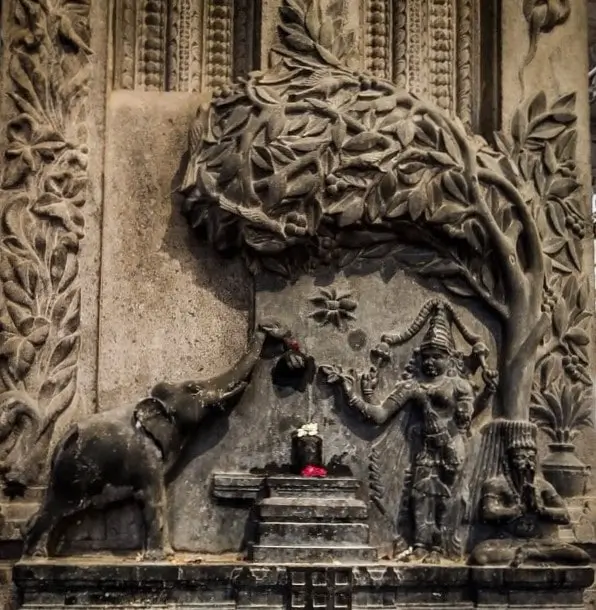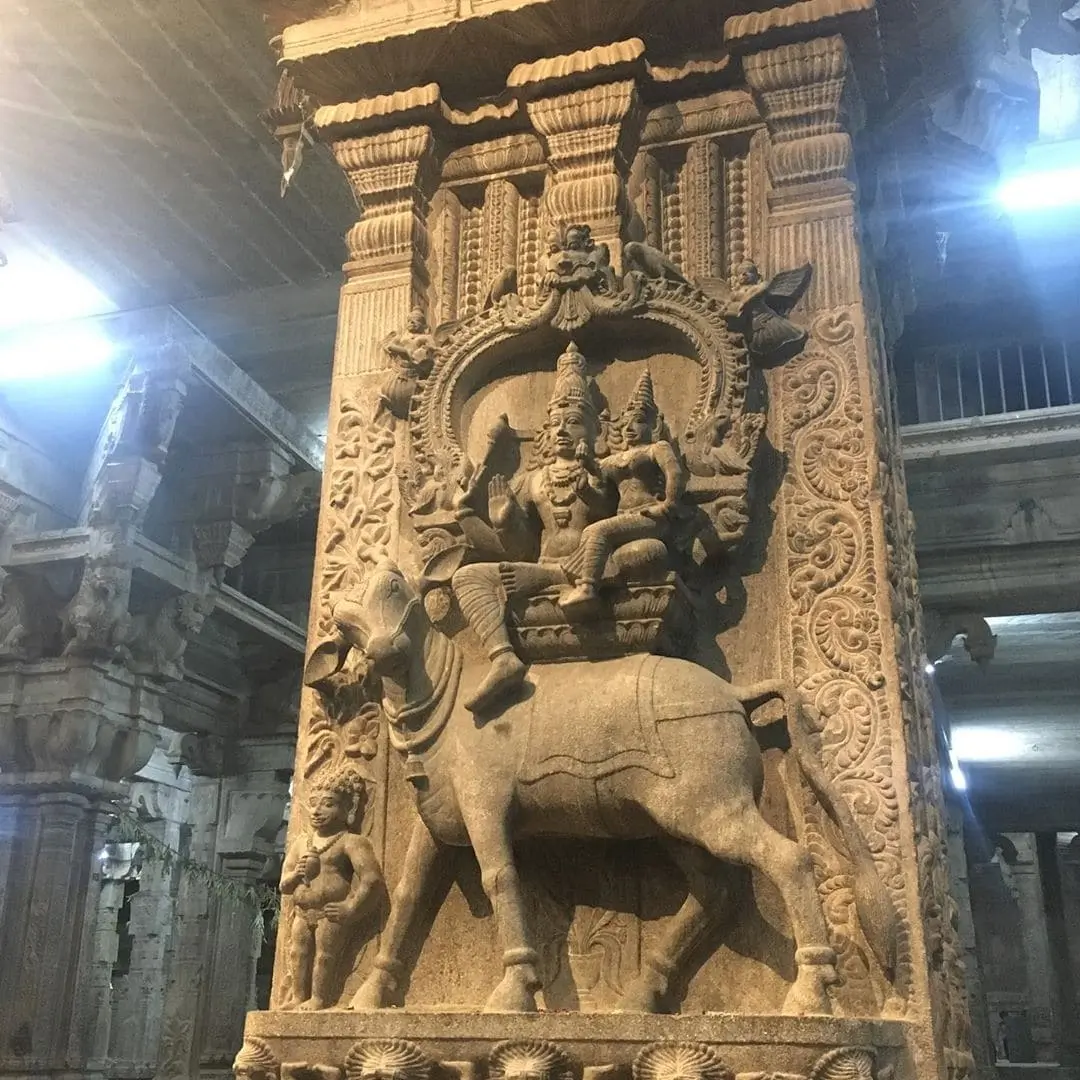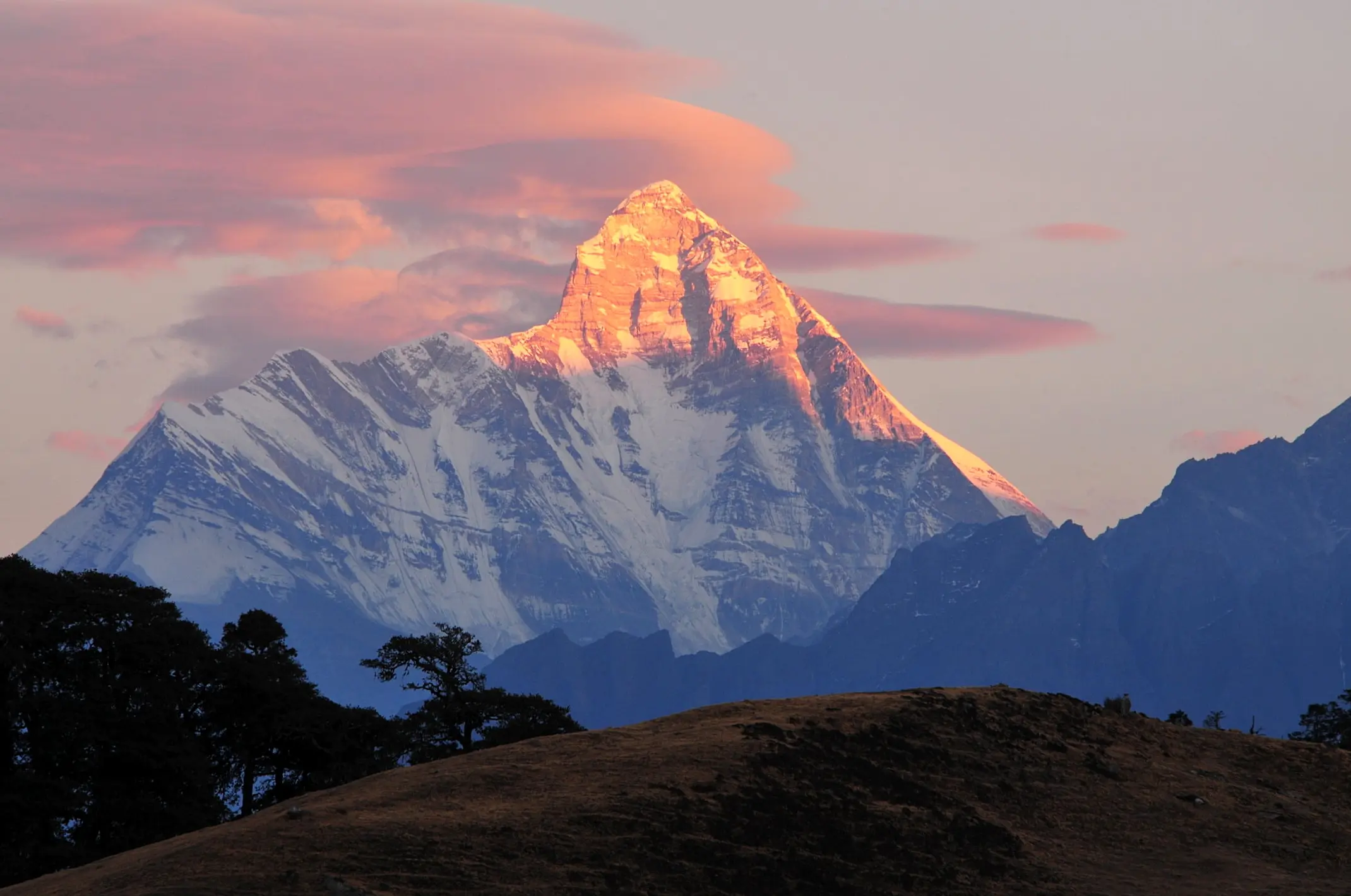Jambukeswarar Akhilandeswari Temple, Thiruvanaikovil (Thiruvanaikal) is one of the Pancha Bhoota Stalams representing the elements of nature – water, which is located on the Srirangam Island – outskirts of Tiruchirapalli (Trichy) district, in the state of Tamil Nadu and with River Kaveri on Southern side and river Kollidam (Coleroon) on the Northern side. This temple is close to Srirangam Temple (Shri Ranganathaswamy Temple), which is considered the root of all the Vaishnava temples. The concept of God probably emerged from the worship of the Mahabhuta or five great elements of nature (also known as Pancha Bhootas) — Agni, Vāyu, Prithvi, Akasha, and Jala. It is intriguing to observe that, in India, Lord Shiva as Rudra, is considered the earliest form of a Deity and has 5 temples worshipping him as a manifestation of the Pancha Bhootas. These temples are collectively named “Pancha Bhoota Sthalas” — Vāyu Linga at Sri Kalahasti, Agni Linga at Thiruvannamalai, Akasha Linga at Chidambaram, Prithvi Linga at Kanchipuram and Jala Linga at Thiruvanaikaval.
"Jambukeswarar Temple which represents the element of nature - water is also called ‘Appu sthalam’ and the Shiva lingam (‘Swami’) here is called ‘Appu Linga’. Even today, you'll see water oozing out near the Shivalingam idol within the temple. The goddess of this temple is ‘Akilandeswari’ (‘Amman’) also called Akilandanyaki. Akilandeswari is pronounced as ‘Akilam – Aanda – Eswari’ (Akilam – Universe, Aanda – Ruler, Eswari – Goddess). Jambukeswarar Temple is also Known as Arulmigu Jambukeswarar Akhilandeswari Temple."
History of Jambukeswarar Temple
 According to the mythological scriptures, Devi Parvathi in her Incarnation as Devi Akilandeswari performed penance in the Jambu forest (Thiruvanaikoil). She made a Lingam out of the water from the River Kaveri, installed it under the Venn Naaval Tree (Jambu tree in Sanskrit or Indian Blackberry in English), and performed abhishekam with the water of the holy river. So, that’s the mythological reason for calling shiva lingam Appu Lingam (Water Lingam). Lord was pleased with her devotion and appeared before Devi Akhilandeswari and taught her Siva Gnana for this reason this temple is also known as Gnanashethram. Devi Akhilandeswari took Upadesa (lessons) facing East from Lord Shiva, who stood facing west. Hence, this Temple is also revered as an Upadesa Sthalam. Thirukalyanam is not performed in this temple (because Devi was like a student and Lord Jambukeswara was like a Guru). As Akilandeshwari worshipped Lord Shiva in this temple, even today at noon the priest dresses like a female and does pooja to Jambukeswarar and also for ‘Go Maatha'(COW).
According to the mythological scriptures, Devi Parvathi in her Incarnation as Devi Akilandeswari performed penance in the Jambu forest (Thiruvanaikoil). She made a Lingam out of the water from the River Kaveri, installed it under the Venn Naaval Tree (Jambu tree in Sanskrit or Indian Blackberry in English), and performed abhishekam with the water of the holy river. So, that’s the mythological reason for calling shiva lingam Appu Lingam (Water Lingam). Lord was pleased with her devotion and appeared before Devi Akhilandeswari and taught her Siva Gnana for this reason this temple is also known as Gnanashethram. Devi Akhilandeswari took Upadesa (lessons) facing East from Lord Shiva, who stood facing west. Hence, this Temple is also revered as an Upadesa Sthalam. Thirukalyanam is not performed in this temple (because Devi was like a student and Lord Jambukeswara was like a Guru). As Akilandeshwari worshipped Lord Shiva in this temple, even today at noon the priest dresses like a female and does pooja to Jambukeswarar and also for ‘Go Maatha'(COW).


Story Behind King's Red-Eyes
When the queen (King’s mother) was pregnant, the palace astrologer suggested a good time to give birth but the queen developed labor pains much earlier. She directed her servants to tie her upside down so that the delivery could be delayed, and she could have a wise and virtuous son who could head the kingdom righteously. As per the astrologer’s suggestion, the child was born at an auspicious time but the waiting time inside the womb made the baby’s eyes red. Hence, he was known as Ko Chengannan (Ko — King, Chengannan— Red-Eyed). He was responsible for building as many as 70 temples.
It is believed that Sri Rama after defeating Ravana has worshipped this temple. Likewise, Sages Agastya, Gowtama, and Parasara had also visited this place. According to the temple authorities, the present temple was built by King Kochengannan (Kochega Chole), one of the Early Cholas, more than 2,000 years ago. Some scholars say that he ruled in 600 BCE, while others maintain that it had been actually 100 BCE/100CE. The Cholas, The Pandyas, and The Hoysalas also contributed magnificently to its upkeep and expansion.
Places To Visit Nearby
Some of the major pilgrim centers of South India-namely, are Thanjavur, Madurai, and Srirangam (Ranganathaswamy).
- To the East of Tiruchirapalli (Trichy) lies Thanjavur, the site of the imposing Brihadeeswara Temple. It was built by Raja Raja Chola.
- To the South of Tiruchirapalli (Trichy) lies Madurai, which is famous for Meenakshi Temple.
- To the North, just 10 km away is Srirangam which is famous for Shri Ranganathaswamy Temple or Thiruvarangam. It is a hallowed place of pilgrimage for all followers of the Vaishnavite faith. This 13th-century shrine is dedicated to Lord Ranganatha (a form of the Supreme God, Maha Vishnu) and was constructed in the Dravidian architectural style which was later renovated with a new gopuram of truly awesome proportions-soaring through 13 tiers to over 70 mts, the tallest temple tower in Asia. It has the mammoth reclining figure of Ranganatha.
Best Time To Visit Jambukeswarar Temple
The best time to visit the temple is during the winter season from November to March. During this time, the weather remains pleasant and favorable for outdoor activities. The temperature ranges from 19°C to 22°C. The climatic conditions during this time are cool and comfortable.
Where To Stay
Accommodation
Most of the Resorts, Hotels, Cottages, and Homestays offers budget accommodation in Srirangam.
How To Reach
BUS
The temple is located at a distance of 8 km from the central bus stand and at a distance of about 3 km from the chathiram bus stand of Tiruchirapalli. Both government and private bus services are available to reach Thiruvaanaikaval. The city is well connected by road to major South Indian cities like Madurai, Chennai, Pondicherry, and Thanjavur.
Train
The nearest station is Tiruchirapalli which is located at a distance of 8 km from the temple and has 2 train stations Tiruchchirapali and Tiruchchirapali Fort. These two connect with towns of South India such as Chennai, Chidambaram, Thanjavur, Madurai, Tirupati, Tuticorin, and Rameswaram. Tiruchi is an important junction on the Southern Railway connecting Chennai, Thanjavur, Madurai, Tirupati, Tuticorin, and Rameswaram.
AIR
The nearest airport is Tiruchirapalli which is located at a distance of 15 km from the temple and is around 10 km from Srirangam. Regular flights connect it with Chennai, Banglore, Madurai, Sharjah, Kuwait, and Colombo.
Thank you for visiting my blog and stay tuned for more updates related to ancient history on my website: Ancientterminus




